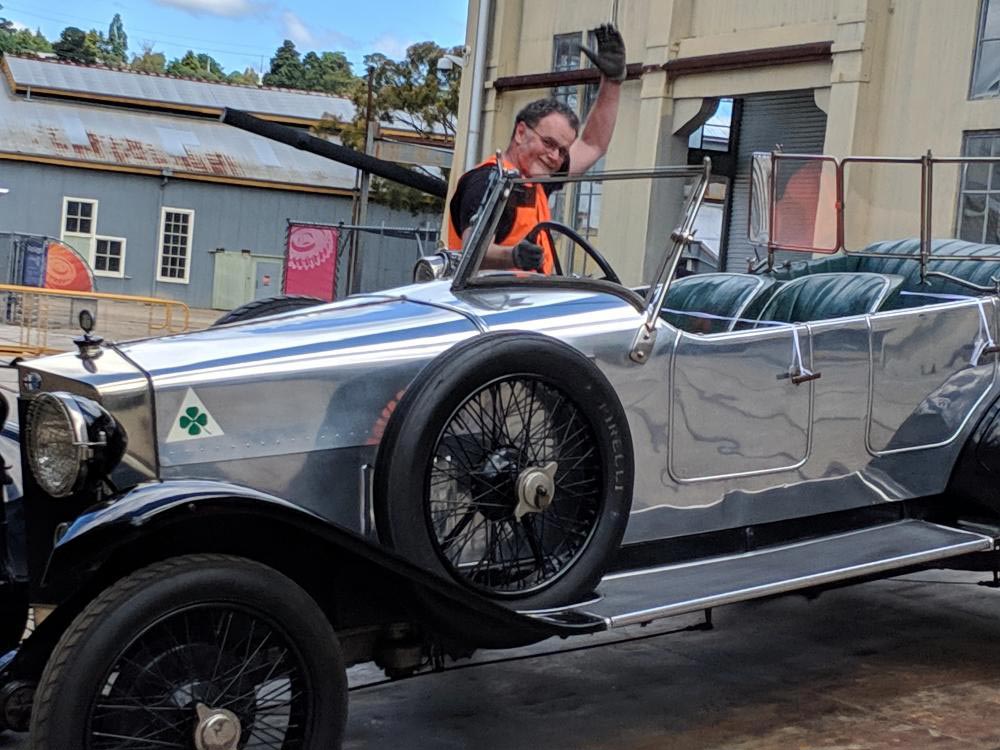
The recent sudden passing of David Hallam has come as sad news to the many individuals who had worked with him. For me the loss is very direct, for he was the conservator who found employment for me before I had graduated, and continued his mentorship until his untimely passing. Deciding what to say about David is not easy, perhaps because of the finality it embodies.
David and I love old Volvos, a very sad affliction. His passing has left a hole not only in the museum community but for many of the people with whom he shared his time. Fellow Volvo addict Paul wrote:
‘David always has this air of calm about him, something I wish I could manage myself. It was nice to spend time having a cuppa and chat at his old place in Queanbeyan, usually out under the trees.’
That in essence was David, a man with diverse circles of interest in the most unexpected quarters. He took time for and gave time to people, and nurturing the potential of people mattered greatly to him. Time is that most valuable of commodities, and David gave it.
It is important here to acknowledge David’s professional activities. He was one of Australia’s founding trained and qualified conservators, one of the pioneers of changing the way that museums think about collections care and one of our few metals conservation experts. Ideas put in place by him still impact how museums work today without them knowing the source. But David was not content with this.
His professional record will be recognised in an upcoming journal article; however, he was in short someone who was one of the most effective Australian conservators at taking the Australian conservation perspective to the world. He was a highly prestigious Woodrow Wilson Fellow greatly influencing the Smithsonian’s approach to technological heritage. He was a Getty Scholar attempting to take on a ‘wicked problem’ of modern metal finishes and coatings. He was Chair of ICOM-CC Metal, and influenced the greater inclusivity of that organisation beyond Europe. At home he worked at senior levels in Queensland and Canberra on a diversity of materials and questions that would be difficult to undertake for a conservator beginning a career today. My own recollections of working with David directly span Spitfire aircraft, Holden prototypes, Kelly Gang armour, Japanese swords, the Hartog Plate, Cook’s cannon, Rodin’s Thinker and even the corrosion chemistry of a Rembrandt painting. This is but a part of the list I could make, and I know that many others could create a similar list in Australia and around the world. He did stuff, as well as talking about it.
David got involved and was passionate. There are many academic and treatment outcomes that will leave an intergenerational legacy. Long after he is forgotten, I know that he was proud of the idea that someone in the future would be still experiencing original objects saved from ‘restoration’ and truly reflecting on the people that made and used them in all their imperfection. Of all the things that David has taught me, it is that one person can have meaningful influence. The old hat, faded T-shirt, and long-long-past-its-prime old Volvo that was David’s signature arrival will be deeply missed in my household, and in many corners of the conservation field. David traded on substance, not image, making time in a busy world to leave a gentle but substantive footprint on the profession that he loved. His ideas remain, but the man will be deeply missed. Goodbye my best friend and mentor.